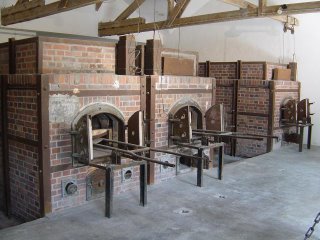Germany, the First 48 Hours

Akwaaba (welcome) home to us! We spent the last week in Germany- mostly Bavaria, a little bit in the Rhein Valley.
Our combined knowledge of the German language consists of 'gesundheit' and two friends of Cooper's who live here in Ghana and who occasionally say "mein gott!". So we armed ourselves with two maps, two guidebooks, and one really good phrasebook.
We started in Frankfurt because that's where Lufthansa lands after they leave here. We had been flying all night, and gotten about three hours sleep apiece, but were determined not to waste time, so we picked up our rental car and hit the Autobahn.
Let me say right here, we love the Autobahn. Yes it's clean, clear, safe, and speedy, but mostly it's populated with German drivers who are easily the kindest, most orderly, safest drivers on the planet. Granted there are exceptions, but we marveled at what Cooper called "the zipper effect". Two huge lines of traffic that need to merge, because of roadworks, into one huge line of traffic.
In America and England and Greece, this results in a kind of haphazard blending of both lanes in a catch-as-catch-can sort of way, in Ghana it's a free for all with no rules that routinely brings the whole shootin' match to a dead standstill, but in Germany, every single time, the cars seamlessly meshed in alternating turns into a single lane that never dropped below 50kph.
On one day, we got caught in a massive traffic jam, the cause of which we never discovered, but there were only two highway lanes. The "slow" lane was nose to tail with semi trucks- literally miles and miles of them. We drove past three miles of stopped trucks before our lane of cars was stopped, and not one truck moved into the car lane to attempt to get further along the highway, because they weren't supposed to. In Ghana, not only would all lanes have been filled with every kind of vehicle, but there would have been third and fourth lanes made from the emergency shoulder and grass median. We were awestruck, and bow to the drivers of Germany. It was a unique experience for us and the wonder of the whole thing completely mitigated the half hour delay in traffic.
Anyhoo, we took off for Bavaria and managed to get to Ulm before our jet lag kicked in. We checked into a hotel - the first of a few directly on the Danube!- and took a two hour nap (enough to get us through until our new German bedtime- two hours off Africa).
As we tried to plan our first full day in Germany, we realized that our idea to start at the Austrian border would be scuttled by the fact that Dachau was closed on Mondays. Sigh. So we re-plotted our course for the North side of Munich and headed out the next morning to visit what I hope will be the last Concentration Camp I ever visit.
Not that it was a bad place to go, or that I'm not glad we went- I just don't think I can face another one. Dachau wasn't even a 'death camp' in the sense that people weren't sent there just to be exterminated. But the fact of the camp at all and the number of deaths from mistreatment, medical experiments, and other dubious causes still make it a terrifically horrible place.
The camp was established in 1933 and was the model for all subsequent concentration camps. Of the more than 200,000 people incarcerated there, almost 25% died. The malnutrition and disease in the camp at the time of liberation claimed hundreds more.
This is what you would have seen as you stepped out of your railway box car and walked away from the railroad tracks.

This serene view is what's left of the barracks area- only one of the barracks still stands, but in 1933 each side of this pathway was lined with a couple dozen barracks meant to hold 200 people each. By the end of the war, each one held ten times that many. Needless to say, the trees were NOT part of the original Dachau experience.

Inside the barracks, at the beginning of the camp's life, these were the bunks for prisoners, usually equipped with straw mattresses.

By the end of the war, the neat dividers were gone and each 'bunk' had become a large open plywood box filled with countless prisoners.
The prisoners who didn't survive (often because of 'medical experiments', even more often because of having their arms tied behind their backs and then hung by the wrists and "played with") were cremated here.

The ashes of all those thousands of people were dumped nearby, at a site identified and given a suitable memorial by the Allies after the war.
This picture shows Ted and Cooper at the 'strip of death'. If you were on the grass, you were within range of the guards' rifles and would be shot first, questioned later. What doesn't show up is the razor wire and electric fencing, but trust me, it's there. Sometimes prisoners would 'commit suicide by guard' and intentionally run onto the grass. I might have done that myself in their situation.

Needless to say, it was a somber, emotional day. Cooper learned more in four hours at Dachau than he could have in a week in a classroom. He read about the people of all races and religions who were rounded up as enemies of the Third Reich, saw pictures of real people living a waking nightmare, and put the 'glamorous' images he had of WWII into a sharp and decidedly un-glamorous focus. He was moved by what he learned this time last year about Anne Frank, but actually standing in a concentration camp and seeing the film of the liberation armies has given him a much broader, more factual perspective.
But I don't want to see this kind of proof of how evil men can be again. I certainly believed it happened and had even taught some of the history of Sobibor to my adult literacy students, but to actually stand there and try to absorb it all was painful and draining.
Nuff said. If you can, try to go see one for yourself. Sometimes the hardest things are the things most worth doing- but I won't fault you if you can't do it more than once.
Tomorrow I'll post about more cheery stuff and the whole rest of our week in Germany.








<< Home